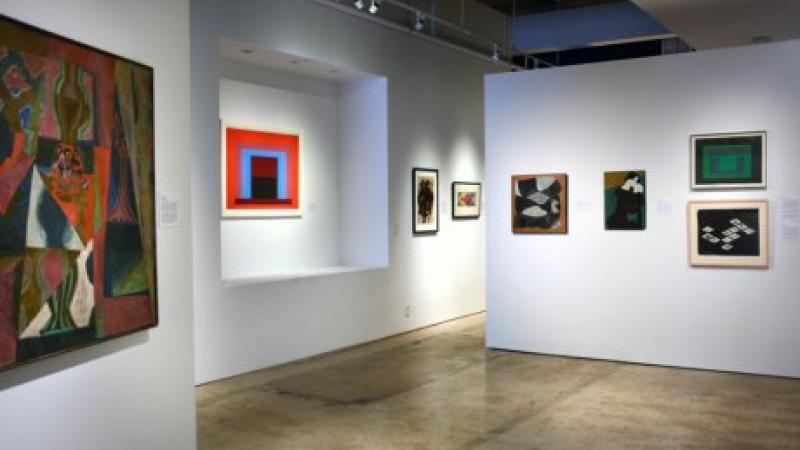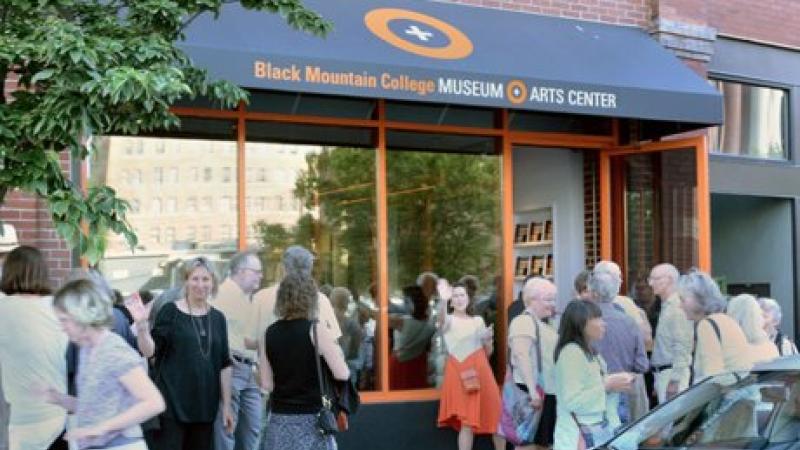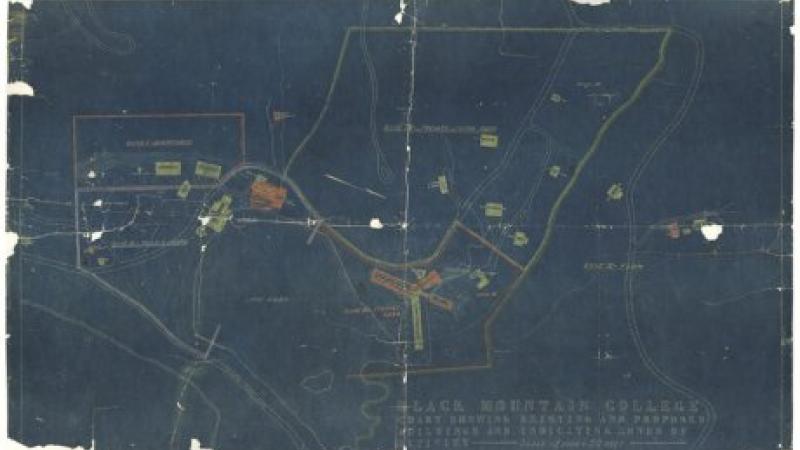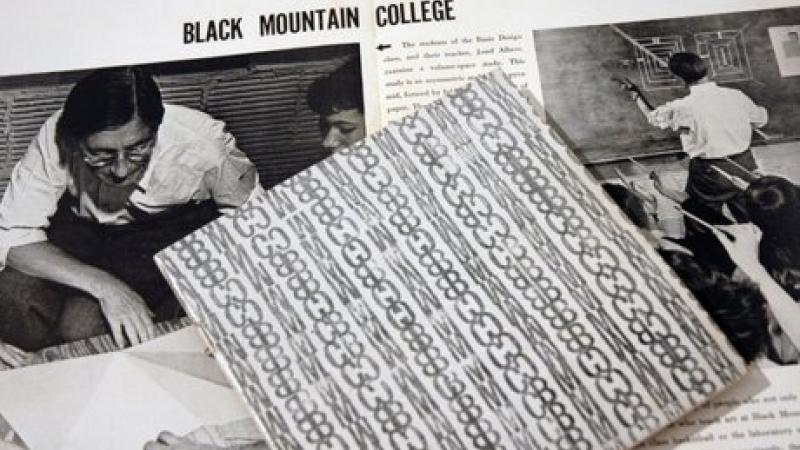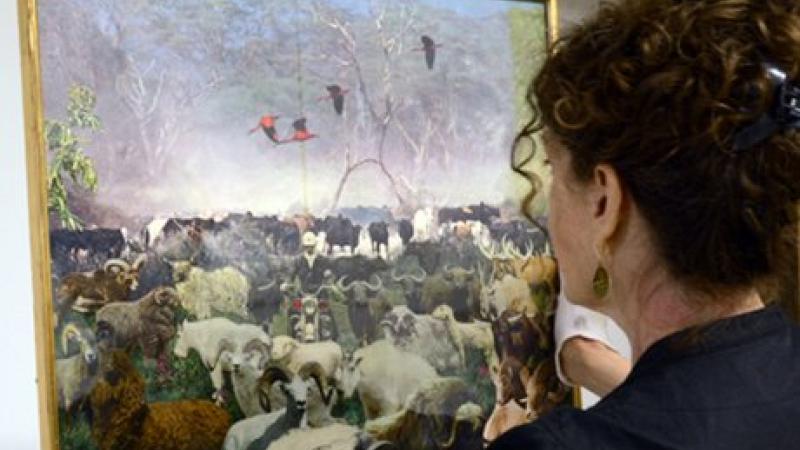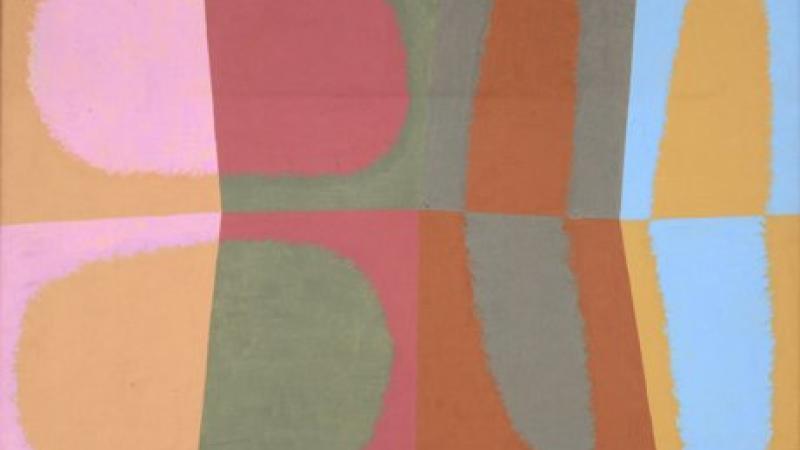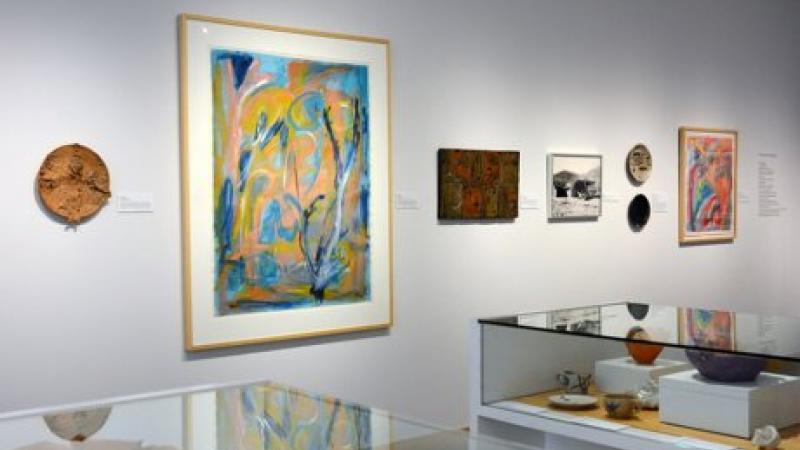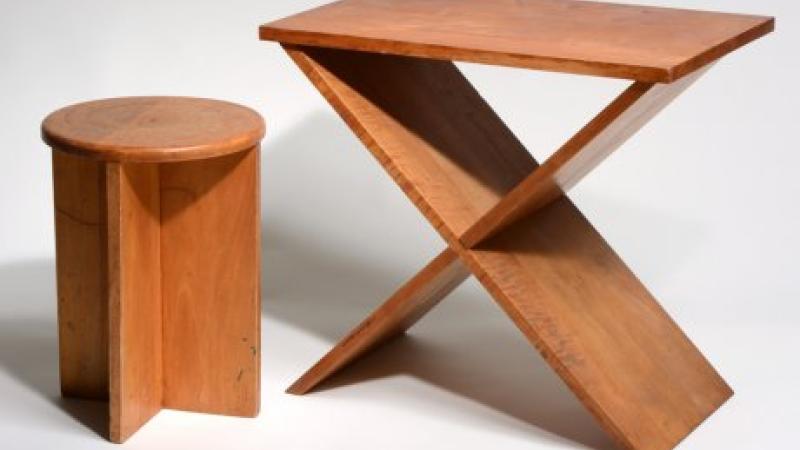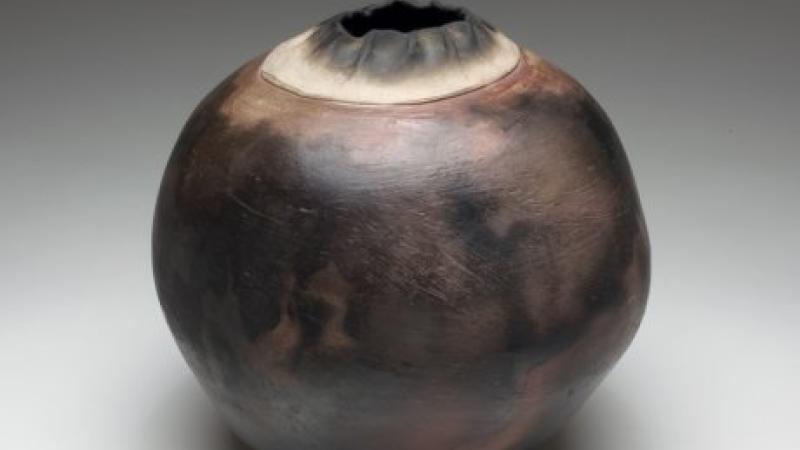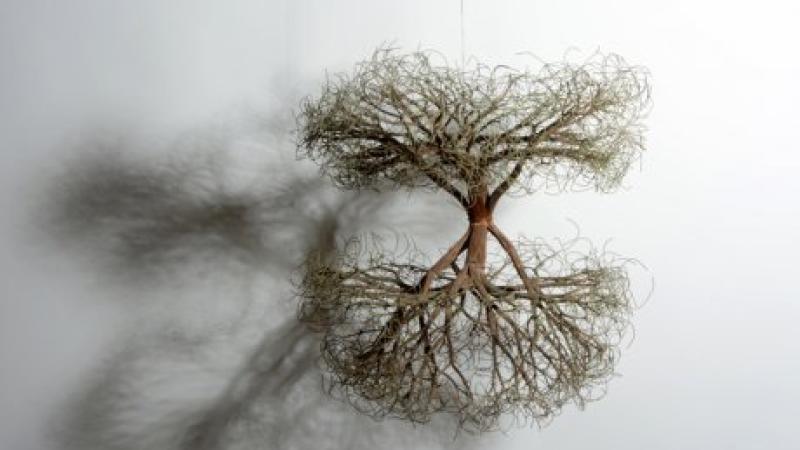50 States of Preservation: Black Mountain College Museum and Arts Center in Asheville, NC
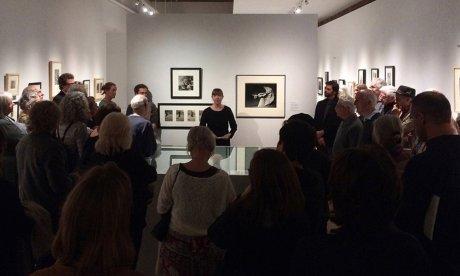
Gallery talk with Julie J. Thomson, curator of Begin to See: The Photographers of Black Mountain College, 2017
Image courtesy of Black Mountain College Museum and Arts Center

Gallery talk with Julie J. Thomson, curator of Begin to See: The Photographers of Black Mountain College, 2017
Image courtesy of Black Mountain College Museum and Arts Center
This feature is part of a series we call “50 States of Preservation,” in which we are touring small and mid-sized museums, libraries, historical societies, and other repositories across the country to show how they are helping to preserve the nation’s cultural heritage. Read other entries in the series here.
When people think of modern art, they often think of the major centers such as New York, Chicago, Los Angeles, Paris, and Rome. However, for 24 years in the first half of the 20th century (1933-1957), Black Mountain College (BMC), located 20 minutes east of Asheville, North Carolina, became a nexus for some of the most important modern artists, musicians, choreographers, and thinkers.
Conceived by John A. Rice and founded in 1933 with Theodore Dreier, Frederick Georgia, and Ralph Lounsbury, the curriculum at Black Mountain College was based on John Dewey’s principles of progressive education. The arts were considered a critical part of a well-rounded general liberal arts education at BMC. To that end, the college hired prominent artist Josef Albers to lead the art program. Albers had fled from Nazi Germany after the closing of the famous Bauhaus art school where he had been both student and teacher. Albers and his equally accomplished wife Anni both taught at Black Mountain College where they helped to foster a collaborative experience between professors and students. Among the luminaries who taught and studied at the BMC during these years were Willem and Elaine de Kooning, Jacob Lawrence, Buckminster Fuller, Robert Rauschenberg, Cy Twombly, Merce Cunningham, John Cage, and Ben Shahn.
Although Black Mountain closed in 1957, the Black Mountain College Museum and Arts Center(BMCM+AC) in Asheville preserves BMC’s history of fostering important artistic collaborations and experimentation in new educational methods. Founded in 1993 by Mary Holden, the museum presents the history of Black Mountain College through its art and archival collections. The museum houses exhibitions of BMC artists, provides resources to scholars researching the college and its artists for films and publications, and hosts a variety of public events that engage new students, the general public, and contemporary artists and scholars, such as the annual ReVIEWING International Conference.
In 2015, the Black Mountain College Museum and Arts Center received a Preservation Assistance Grant from NEH. With it, the museum hired a preservation specialist to assess its collections, prepared an emergency preparedness plan, and purchased and installed environmental monitoring equipment. Program Director Alice Sebrell noted that, “As a result of the NEH PAG award and a recent grant from the Henry Luce Foundation, we are now beginning a collections digitization project that will result in much greater public access to our collections via our website.” With improved preservation of its holdings, BMCM+AC has launched an initiative entitled ACTIVE ARCHIVE. According to Sebrell, artists, curators, and cultural thinkers “will be able to engage with our collections in deep and meaningful ways.” The first of these efforts is an exhibition of the work of Philadelphia-based multi-disciplinary performance artist Martha McDonald. ACTIVE ARCHIVE: Martha McDonald: Process + Performance will be on view at the Black Mountain College Museum and Arts Center through December 30, 2017.
In every state, NEH supports organizations that preserve humanities collections. Preservation Assistance Grants for Smaller Institutions (PAGs) fund projects that help safeguard photographs, letters, documents, prints, moving images, sound recordings, maps, drawings, artworks, textiles, furniture, and artifacts, making them available for future generations. These collections help researchers, educators, and members of the public better understand the complex stories of the various cities, towns, and tribal groups that make up our nation.
Since 2000, NEH has made nearly 2,000 Preservation Assistance Grants to small and mid-sized organizations to preserve and care for their humanities collections. In all 50 states, the District of Columbia, and Puerto Rico and the Virgin Islands, PAG awards have funded preservation assessments, purchase of shelving, environmental monitoring equipment, and preservation supplies, and training for staff. Organizations in all states and U.S. territories are eligible to apply, and the program encourages applications from those new to NEH. The next application deadline Preservation Assistance Grants for Smaller Institutions is May 1, 2018. If you have any questions about this grant program, please contact us at preservation@neh.gov or 202-606-8570.
